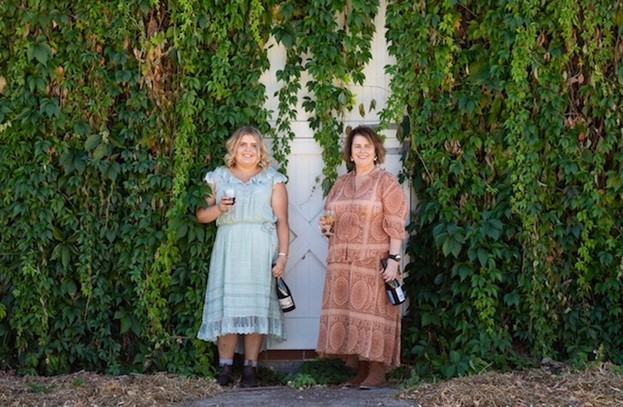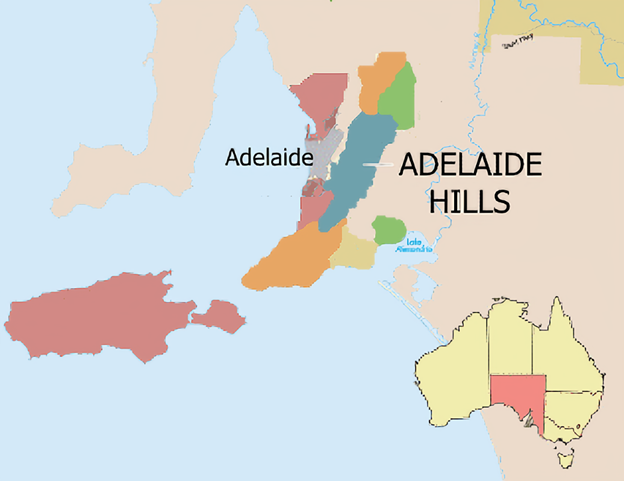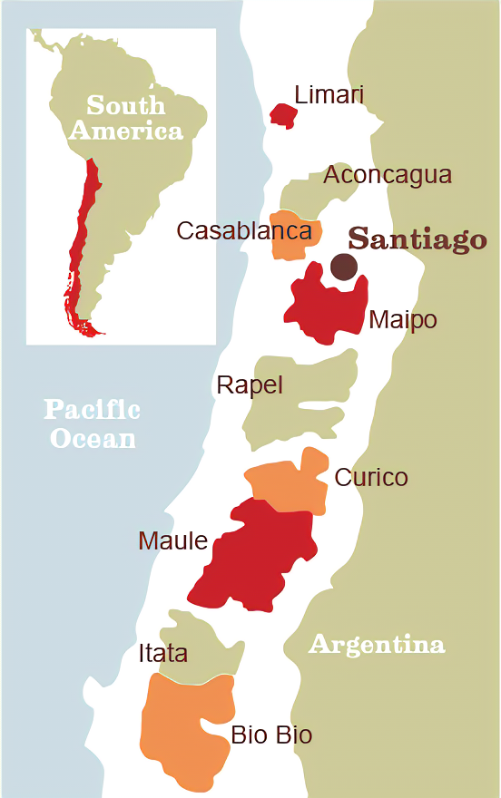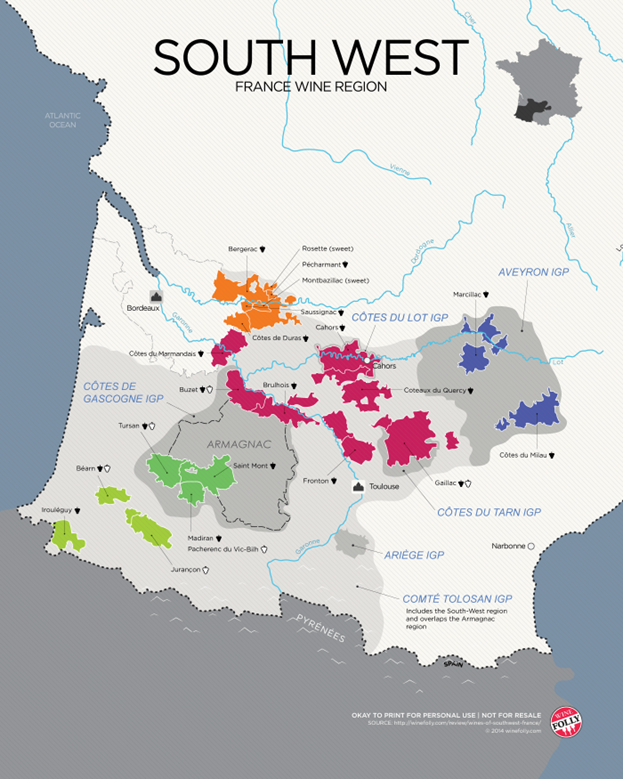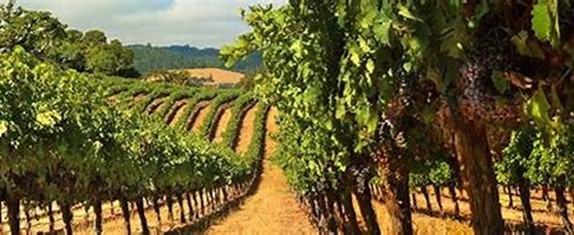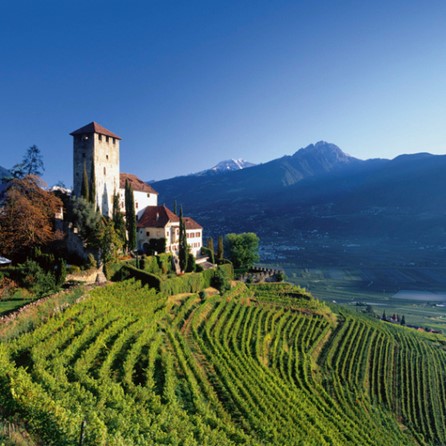Holiday Market
SILVER WINE CLUB WHITE ONLY
MARCH 2023 WINES
-
Fattoria San Felo Viognier
-
Bodegas Altanza Sauvignon Blanc
-
Moulin de Gassac Chardonnay
-
Vidal + Vidal Cépas Muy Viejas Verdejo
-
Bodegas Y Viñedos Tabernero Vittoria Chardonnay
-
Airfield Estates Sauvignon Blanc

Fattoria San Felo Viognier
2018 | $12.99
DESCRIPTION
Fattoria San Felo was created in 2001 by the Vanni family fueled by their passion for viticulture, their attachment to the farming traditions of the area and their desire to promote the Maremma viticultural appellation. Fattoria San Felo is located in the heart of the Tuscan Maremma area on the slopes of Mount Amiata between the hills of Uccellina Park and Costa D’Argento.
The vineyards consist of sandstone soils rich in schist. The Mediterranean climate is influenced by sea breezes, sun-filled days and cool nights. The sea has an important impact on the local microclimate with temperature variations that are never too extreme. The grapes ripen slowly, leading to fresh and elegant wines rich in taste and minerality.
Winemaker Fabrizio Moltard has worked with some of the most prestigious wineries in Italy and is described in the wine world as possessing great professionalism, sensory capabilities and profound experience. He shows enormous respect for terroir and has an extraordinary ability to translate this reverence into the unique identities that he creates for each wine. Decanter Magazine called Fabrizio “the secret ingredient in many top Maremma wineries.”
Fattoria San Felo Viognier 2018
Viognier (vee-aa-nyay) is a white wine grape variety and the only variety permitted to be used in the French wine Condrieu in the Rhone Valley. Like chardonnay, viognier has the potential to produce full-bodied wines with a lush, soft character. In contrast to chardonnay, the viognier varietal has more natural aromatics that include notes of peach, pears, violets and minerality. The origin of the Viognier grape is unknown; it is presumed to be an ancient grape, possibly originating in Dalmatia (present day Croatia) and then brought to the Rhône by the Romans.
TASTING NOTES
NOSE: Aromas of yellow peach, citrus and a whiff of almond.
PALATE: An intense taste, full and round with a bright finish.
PAIRING: The highly aromatic and fruit forward nature of the grape allows viognier to pair well with spicy foods such as Thai cuisine. Other great pairings include fish-based main dishes, fish-based pasta or rice dishes, main dishes featuring white meats and sushi.
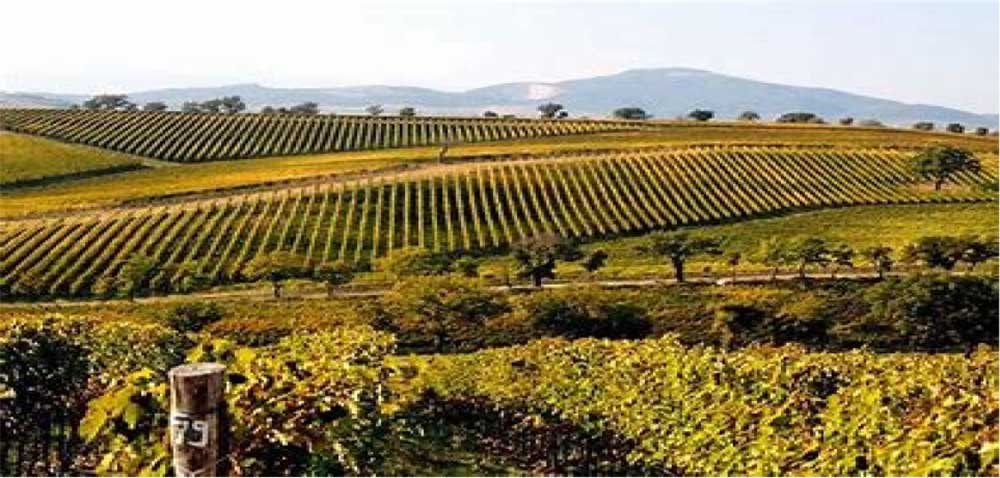
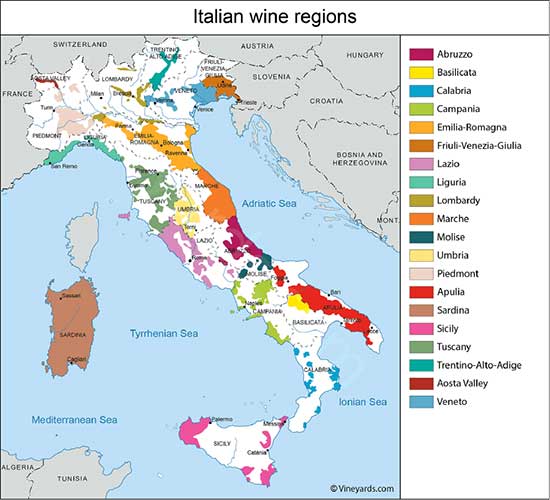

Bodegas Altanza Sauvignon Blanc
2020 | $12.99
DESCRIPTION
Altanza winery is in the most prestigious region of Rioja, Rioja Alta in Spain. The winery cultivates just two grape varieties sauvignon blanc and tempranillo and practices organic farming methods.
Altanza was founded by a group of friends who shared the dream of making classic timeless Riojas, with a modern touch and a lot of authenticity. They built a state-of-the-art winery based on 3 pillars: their own Estate vineyard, Tempranillo grapes and French oak.
Bodegas Altanza Sauvignon Blanc 2020
An aromatic, balanced, fresh and full-flavored wine that shows the great potential for this variety in DOCa Rioja. The must slowly ferments in stainless-steel tanks at a controlled temperature for 20 to 25 days, to maintain the characteristic freshness and lightness of this variety.
TASTING NOTES
NOSE: Tropical, ripe passion fruit; pineapple, apricot, peach, grapefruit, and mango with soft floral tones.
PALATE: Light bodied, dry, crisp, with racy acidity and notes of lemon zest.
PAIRING: Vegetarian dishes, shellfish, light flaky fish, salad, and goat cheese.
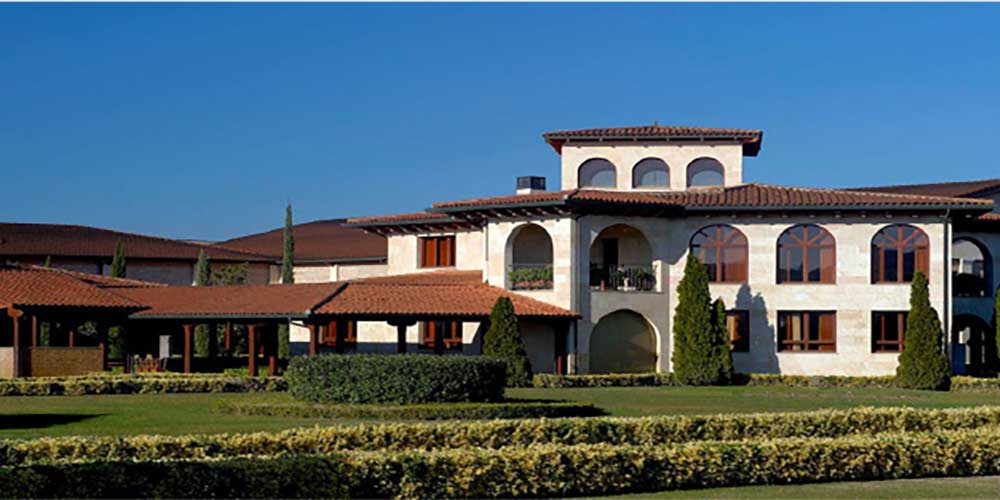
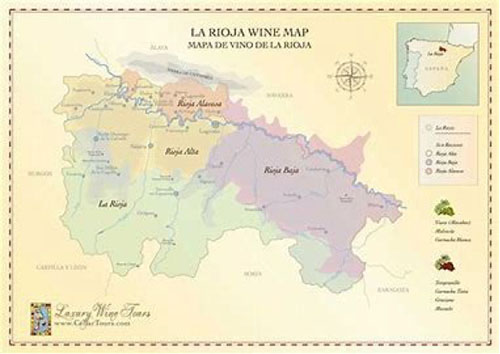

Moulin de Gassac Chardonnay
2021 | $11.99
DESCRIPTION
For nearly five decades, the Guibert family has watched over and tended to the vines with unfailing dedication. The story began with Véronique and Aimé and continues today with the second generation at the helm. To one day be followed by a third…
May 2016, the founding father Aimé Guibert passed away, but his wines live on. Here is a look back over a story that began in 1971 in the Gassac valley, near Aniane.
In 1971, ethnologist and Ireland specialist Véronique Guibert de la Vaissière and her husband Aimé, a tanner and glove manufacturer in Millau, fell in love with an old, abandoned farmhouse in the unspoilt rural setting of the Gassac valley near the ancient abbey of Aniane.
In 1972, on the recommendation of their Aveyron friend, Professor Henri Enjalbert, a geologist specializing in the relationship between soils and grapes, they planted 17,000 non-cloned Cabernet-Sauvignon grafts sourced from top Bordeaux properties. An underground cellar was built on the site of the former Gallo-Roman watermill adjacent to the farmhouse, over the cold spring water from the river Gassac.
In 1978, oenologist Emile Peynaud, a consultant to Châteaux Margaux, Haut-Brion, La Mission Haut-Brion and La Lagune, followed progress at a distance and gave winemaking advice for the first vintage. Bottled in 1980 under the ‘Vin de Table’ label, the 1978 vintage was blended from 80% Cabernet-Sauvignon and 20% Malbec, Merlot, Syrah, Cabernet Franc, Pinot and Tannat. Using a technique unheard of that time in the region, half of the 17,866 bottles produced that year were offered for sale to family, friends, and a handful of restaurateurs. The future of the primeur system was thus born and is still used today.
The 1982 vintage marked the first media endorsement of Mas de Daumas Gassac red wines, hailed by the magazine Gault&Millau as ‘Languedoc’s Château Lafite’. In 1986, white Mas de Daumas Gassac, a uniquely crafted wine showing huge aromatic complexity, made its debut. This consummate wine, designed to fully preserve fruit aromas, is primarily a blend of Viognier, Chardonnay, Petit Manseng and Chenin Blanc, fused with around fifteen other grape varieties from Old Europe which include Neherleschol from Israel, Khodorni from Lebanon, and Tchila from Armenia.
In 1990, the arrival of rosé Frizant completed the estate’s range of wines, which even today still numbers three – a red, a white and a rosé. In 1991, the Guilhem and Figaro labels made their debut, ushering in the Moulin de Gassac selection which currently totals 2.2 million bottles.
Since 2000, four of Véronique and Aimé Guibert’s five sons – Samuel, Gaël, Roman and Basile – have worked at the property and since 2009, these close-knit siblings have taken over estate management.
Moulin de Gassac Chardonnay 2021
This wine is produced in the Pay d’Oc region of Languedoc, France. It is made of 100% chardonnay grapes. The grapes come from vines grown in clay and limestone terroir close to the Thau Lagoon. The grapes are de-stemmed and macerated with the skin for 3 hours. Then, it is aged 5-6 months in stainless-steel tank.
TASTING NOTES
NOSE: Hints of citrus and wildflowers.
PALATE: Opens with fruity notes with a hint of honey and displays a full-bodied, long, buttery finish.
PAIRING: A wine that will really enhance white meat and Mediterranean shellfish.
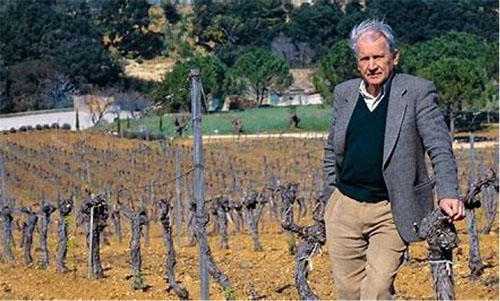


Vidal + Vidal Cépas Muy Viejas Verdejo
2019 | $17.99
DESCRIPTION
Vidal is a family name shared by the producer and the importer of this wine. It means Life or to Live. We chose Cépas muy viejas (Very old vines) from a single vineyard to express this distant family connection. It is the perfect model for what the Verdejo grape can produce in ideal soil and in the hands of a sensitive winemaker.
Vidal + Vidal Cépas Muy Viejas Verdejo 2019
This wine is made with 100% verdejo grapes from the Finca El Alto vineyard in La Seca. The vineyard is an ancient and arid, stone strewn river bed of 21 acres. The soil is sandy with fist sized alluvial stones. The vines grow at an elevation of 2300 feet. Yields of the 80-year-old vines are low, at only 3 kilograms per plant. The wine is fermented in small stainless-steel tanks and aged for 6 months.
TASTING NOTES
NOSE: Filled with fruit and floral tones.
PALATE: Soft and big, with good balance displaying notes of grapefruit and bitter almond finish.
PAIRING: Vegetarian, pork, shellfish, and seafood.
FUN FACT: Light, vivid yellow. Bright and energetic on the nose, displaying Meyer lemon and pear qualities and a hint of succulent herbs. Silky and focused on the palate, offering lemon curd and pear flavors that pick up a floral nuance on the back half. Clings with good tenacity on the finish, which leaves a hint of honeysuckle behind. Vinous Magazine- 90 Points

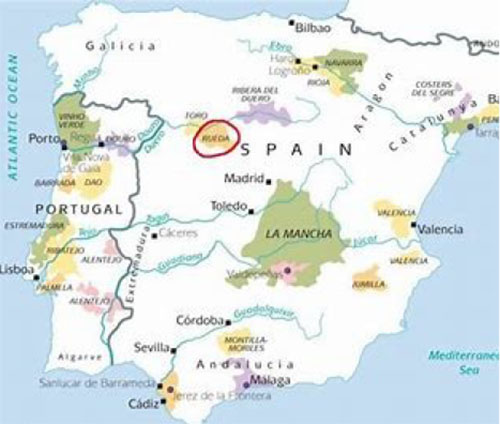

Bodegas Y Viñedos Tabernero Vittoria Chardonnay
2020 | $9.99
DESCRIPTION
Bodegas y Viñedos Tabernero, was founded in 1897, in the Chincha Valley, south of Lima, Peru. It is a privately held wine company. At present, it has 300 hectares of vineyards and a wedding venue.
Thanks to a careful selection of its grapes, continuous investment in state-of-the-art European technology, highly trained human resources and a marked customer service orientation, Tabernero produces high quality wines.
Bodegas Y Vinedos Tabernero Vittoria Chardonnay 2020
A very ripe Chardonnay will have flavors more towards tropical fruits like pineapple, guava, and mango. A barely ripe Chardonnay will have green apple and lemon flavors. The average temperature in Peru is 85- 90 degrees.
TASTING NOTES
NOSE: Strong fragrance of pineapple, apricot, white peach, and citrus.
PALATE: Crisp and balanced with notes of minerality.
PAIRING: Soft- semi-soft cow’s milk and goat cheese, salads, vegetarian dishes, and white meats.
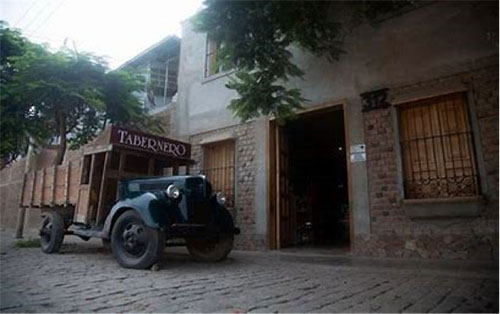
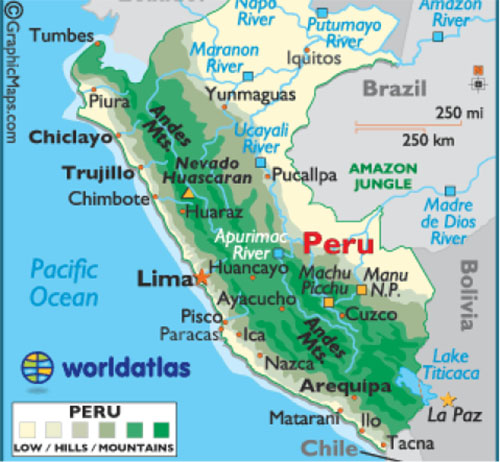

Airfield Estates Sauvignon Blanc
2018 | $16.99
DESCRIPTION
Airfield Estates has a deeply rooted history that traces back to 1907 when our founder and great-grandfather, H. Lloyd Miller, pioneered to the northwest settling in Sunnyside, Washington. As an entrepreneur and successful real estate man, H. Lloyd was largely engaged in the buying and selling of farm properties.
By 1920, H. Lloyd had acquired the site where our estate vineyard is located today. At that time, the property did not have access to irrigation water. Over time, H. Lloyd became instrumental in bringing irrigation water to the higher regions of the Yakima Valley. He met directly with President Roosevelt and acquired the political support necessary to get the Roza Canal Project funded.
In 1941, H. Lloyd leased a portion of our family property to the Olympia Air Transport Corporation, which constructed a flight school for hundreds of Army Air Corps pilots during World War II. The buildings erected on the site included a 70-foot water tower, several airplane hangars, a mess hall, barracks, and several smaller storage buildings. Three dirt runways were also formed, each of which was over a half mile long.
The airbase closed in 1944, and in 1946, the buildings were auctioned off to H. Lloyd Miller for $1. This marked the beginning of Airport Ranch. H. Lloyd converted the site of the airbase into his farm headquarters. Shortly thereafter, our property gained access to irrigation water. And Airport Ranch became quite diversified with cattle, hogs, alfalfa, asparagus, potatoes, onions, and oats.
The beginning stages of our estate vineyard took shape when our grandfather, Don Miller, became interested in growing wine grapes. In 1967, Don purchased 3 different varietals, Riesling, Gewürztraminer, and Cabernet Sauvignon. He planted them the following spring to see what would grow best with the ranch’s climate and soil. The year after that, Don partnered with a local nursery planting 20 different wine grape varietals in greenhouses for propagation. By 1971, our first commercial planting was established.
Our father, Mike Miller, joined the family farm in 1974. He became highly involved in wine grape production and transitioned our farm into what it is today – 830 acres of wine grapes and 350 acres of Concord juice grapes. We sold our wine grapes exclusively to other wineries until 2005 when Mike founded Airfield Estates Winery.
Airfield Estates Sauvignon Blanc 2018
This wine is 100% Estate Grown sauvignon blanc. We’ve been growing Sauvignon Blanc on our estate vineyard in the Yakima Valley for over 40 years. The sites where we grow Sauvignon Blanc are perfectly suited for this grape varietal. Managing our canopies and exposing the grapes at just the right time in the growing season are also critical elements in creating this wine.
TASTING NOTES
NOSE: Displays bright aromatics of papaya, grapefruit, and pineapple with notes of lemongrass and hints of minerality.
PALATE: The wine opens with fresh tropical fruit flavors followed by a compelling element of cashew dust and lemon zest. The wine exits the palate with a crisp, refreshing acidity and a long, clean, balanced finish.
PAIRING: Summer salads, gazpacho, calamari with garlic and pea, grilled vegetable pasta with cumin, bucheron or sharp cheddar.
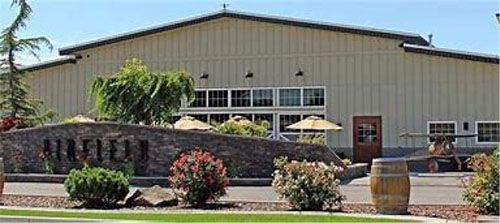
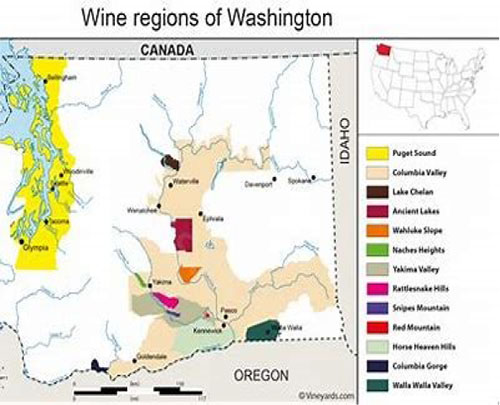
APRIL 2023 WINES
-
Atance Winery Cuvee No. 1 Blanco
-
Dunham Cellars Sauvignon Blanc
-
Modales Winery OOBA Chardonnay NV
-
Agriverde Piane di Maggio Trebbiano
-
Enoport Wines Faisao Vinho Verde NV
-
Fattoria il Muro Lama Chardonnay 2021

Atance Winery Cuvee No. 1 Blanco
2019 | $13.99

DESCRIPTION
Atance is a venture from Bodegas Mustiguillo as they step outside of their small Vino de Pago of El Terrerazo and into the broader D.O. of Valencia. The commitment to quality remains the same as Bodegas Mustiguillo, offering remarkable value. In the late 1990’s, Toni Sarrion began a one-man crusade to save the indigenous variety Bobal and coax it from obscurity and rusticity to the forefront of truly world class wines. ATANCE is an acronym for Acidity, Tannin, and Chalk - these are words that Toni uses to describe different potentials of individual plots. The Vino de Pago El Terrerazo lies within the D.O. Valencia, vines for Atance are primarily from in and around the town of Requena. This area is characterized by higher elevation vineyards, up to 700 meters on primarily limestone and sandy soils. The climate is Mediterranean with a strong continental influence with drastic diurnal shifts in temperature and contrasting winds from the sea to the east and hot La Mancha to the west.
Atance Winery Cuvee No.1 Blanco 2019
Atance "Cuvée No 1" is a white blend of 70% merseguera and 30% malvasía grapes from an estate vineyard in Venta del Moro. This location sits at about 2000 feet of altitude and the soils have high limestone content. The wine is fermented on indigenous yeasts and vinified in stainless steel. Organic viticulture and hand-picked these grapes are from bush vines in Requena, specifically the Conejeros farm.
TASTING NOTES
NOSE:Aromas of white flower with notes of tropical fruit.
PALATE:Nicely balanced freshness with melon, apricot, and pear.
PAIRING: There is a prickly quality from the mineral acidity that makes this a fun pairing with a variety of dishes from salty tapas to heartier pastas.
WINERY WEBSITE:
Valkyrie Selections
D.O. Valcencia, Spain


DUNHAM CELLARS SAUVIGNON BLANC
2019 | $24.99

DESCRIPTION
Founding winemaker Eric Dunham discovered his passion for wine at an early age. As a teenager in the early 1980's, he enjoyed helping himself to his parents' international wine collection. Even with those precious bottles safely tucked away in a locked wine cellar, Eric learned how to pick the lock. When the lock was upgraded, he discovered he could remove the hinges from the cellar door. Mike and Joanne never quite figured out how to keep Eric from his cellar sampling, and during his Navy years stationed at Moffett Field in Santa Clara County, Eric continued to pursue his passion by enjoying many trips to the Napa Valley. With a keen palate and admiration for the art of crafting the perfect bottle, Eric returned home for a father-son fishing trip with Mike. When his dad asked him what he wanted to do with his life, Eric had a clear vision: "I want to make wine."
Following this declaration, Eric landed a 6-month internship at Hogue Cellars in Prosser, Washington, after which he was hired as Assistant Winemaker at L'Ecole No. 41 in the Walla Walla Valley. With winemaker Marty Clubb's blessing, Eric began making small lots of Dunham wine at L'Ecole, the first bottling being the 1995 Dunham Cabernet Sauvignon. After the first few vintages of Dunham's eponymous wine were released to great acclaim, the aspiring young winemaker found warehouse space in an old WWII airplane hangar in Walla Walla and was able to convince his parents to help him launch Dunham Cellars. A couple of years later, David and Cheryll Blair were introduced to the Dunhams. They subsequently joined the Dunhams in pursuit of their collective dream of making and pairing great wine with wonderful hospitality.
Dunham Cellars Sauvignon Blanc 2019
This wine is 100% sauvignon blanc grapes that are hand harvested from the Gamache Vineyard in Columbia Valley, Washington. After fermentation, it is aged in 60% stainless steel, 23% experienced oak, 7% new French oak, and 10% concrete egg.
TASTING NOTES
NOSE: This vintage opens with aromas of fresh pineapple, Bosc pear, citrus zest, and white flowers.
PALATE:Flavors of gooseberries, melon and white peach intermingles with a layer of creaminess on the richly textured palate. This wine is beautifully balanced with a bright, refreshing acidity that leads to a crisp and clean finish.
PAIRING: One of the most classic sauvignon blanc food pairings is goat cheese. There are many other kinds of cheese that you can pair with sauvignon blanc, such as fontina, brie, swiss, feta, gouda, and gruyère. Also because of the vegetal pyrazines in sauvignon blanc wine, it pairs exceptionally well with veggie-heavy dishes, particularly when spring vegetables are involved. If your recipe contains dill, zucchini, fennel, artichoke, asparagus, or peas, it’ll be a great pairing option.
Great basic pairings are shellfish, sushi, whitefish, fresh salads with tangy vinaigrette, Thai food and traditional Greek dishes.
WINERY WEBSITE:
Dunham Cellars
Columbia Valley A.V.A., Washington State


MODALES WINERY OOBA CHARDONNAY NV
???? | $9.99
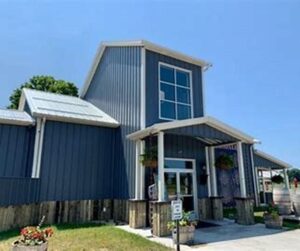
DESCRIPTION
Built over a century ago, the house sitting on their vineyard was home to one of the earliest families established here. These pioneers filled the land with peach and cherry orchards, and over the years, nearly 26 acres of grape vines were planted.
In 2014, Jim and Carol Gonzalez purchased the vineyard, partnered with viticulturist Todd Robbins and winemaker Andrew Backlin, and set out to create serious wines in the footsteps of generations of Michigan fruit-growers.
Many of Modales customers have insisted that Michigan cannot create a stand-out red wine. By the end of their experience in our tasting room, they are carting out bottles of reds and whites to share.
The selection of dry, concentrated wines, elegant, sweet wines and their off-dry Riesling tell truth: Without cheap tricks or heavy cellar intervention, ultra-premium wine comes from a deep respect for the fruit. It comes from paying close attention, taking artistic risks, practicing patience, and having faith.
Glacial sandy soil, climate, and time capture the stories of their historic vineyard with each vintage. They treat every grapevine as an individual and take pride in the sense of place that their small-batch Fennville wines express.
Located in the heart of the Fennville American Viticulture Area (A.V.A.) in Michigan, Modales offers estate-grown bottles of elegant red and white wines.
Modales Winery OOBA Chardonnay NV
OOBA is 100% un-oaked chardonnay grapes. What is the taste difference between oaked and un-oaked Chardonnay? The difference between oaked and un-oaked chardonnay is that oaked chardonnay is aged in new oak barrels, while un-oaked is not. When chardonnay spends time in oak barrels instead of stainless steel, or concrete eggs the oak imparts flavors into the wine that resemble sweet vanilla, caramel, and butter.
TASTING NOTES
NOSE: Aromas of pear, apple, and peach.
PALATE: Un-oaked Chardonnay is closer in style to Sauvignon Blanc than oaked chardonnay, though Chardonnay has fewer “green flavors.” Un-oaked Chardonnay typically has more distinct apple flavors and a crisp minerality with flavors of apples and lemons shining through.
PAIRING: Un-oaked chardonnays have a lean, crisp feel that pairs beautifully with mild, semi-soft cheeses like Gouda or a mild blue. Other great pairing options: grilled seafood, salads, fish, poultry, and pork.
WINERY WEBSITE: Modales Wines in Fennville, Michigan
Fennville A.V.A., Michigan
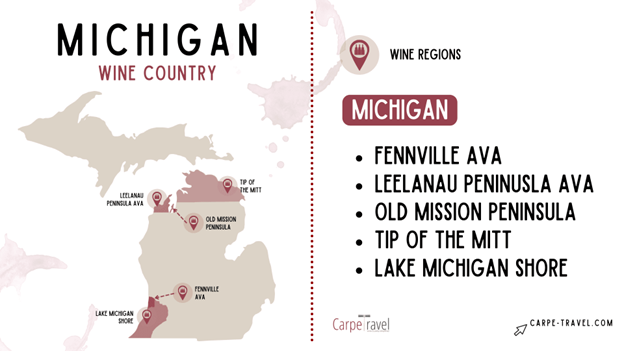

Agriverde Piane di Maggio Trebbiano
2018 | $9.99

DESCRIPTION
Near the ancient village of Caldari, land of Abruzzo, the magic of organic Agriverde Cellars was born.
The cellar is immersed in a very particular ecosystem, which breathes and speaks, impregnated witha glow and an underground current that crosses the ground and reaches man through the product of the earth. Grapes, but not only, Agriverde feeds on landscape and nature, from the green belt of the hills up to the coastal park of Punta Aderci, overlooking the Adriatic Sea, constant presence on the horizon, but the only blue accent in a landscape also dominated by two basic colors: green and rust, which surrounds the cellar, rust instead the color of the cellar itself.
In the 80s, a fundamental stage in their history, production was converted to organic methods and Agriverde obtained certification from ICEA (Institute of Environmental Ethical Certification), in conjunction with the promulgation of the first European regulation on organic farming Agriverde is one of the first organic wineries in Italy.
Agriverde Piane di Maggio Trebbiano 2018
A warm, Mediterranean vine-growing paradise, in Abruzzo, the distance from mountains to seaside is relatively short. The Apenniness, which run through the center of Italy, rise on its western side while the Adriatic Sea defines its eastern border.
Wine composition tends to two varieties: Abruzzo’s red grape, Montepulciano and its white, Trebbiano. Montepulciano d’Abruzzo can come in a quaffable, rustic, and fruity style that generally drinks best young. It is also capable of making a more serious style, where oak aging tames its purely wild fruit.
Trebbiano in Abruzzo also comes in a couple of varieties. Trebbiano Toscana makes a simple and fruity white. However, when meticulously tended, the specific Trebbiano d’Abruzzo based white wines can be complex and long-lived.
In the region’s efforts to focus on better sites and lower yields, vine acreage has decreased in recent years while quality has increased.
TASTING NOTES
NOSE: Light and fragrant herbaceous notes of jasmine and broom.
PALATE: It is fresh and enveloping, with white peach and citrus flavors.
PAIRING: Ideal for aperitifs, vegetarian dishes, fish dishes, cooked or raw, and soft or semi-mature cheeses.
WINERY WEBSITE:
Agriverde
Trebbiano d’ Abruzzo D.O.C., Italy


Enoport Wines Faisao Vinho Verde
NV | $9.99

DESCRIPTION
ENOPORT Wines is a family-owned company in its 3rd generation of ownership, headquartered in Rio Maier. The group unified some of the most well-known and historic wineries, the oldest Adegas Camillo Alves that dates to 1881. Enoport owns seven estates, distributed throughout various wine-growing regions of Portugal, with 400 hectares of land and four vinification centers.
The wine portfolio exhibits multiple regions, each with distinct characteristics, providing unique wines for every occasion.
The vines planted in each estate grow in an integrated production system, prioritizing ecological and certified growing methods, soil conservation, and biodiversity maintenance. They minimize the harmful side effects and the use of agrochemicals to protect the environment, wildlife, and human health for generations to come.
Enoport Winery Faisao Vinho Verde NV
The vast majority of Vinho Verde wines are white. Six grapes (you’ve never heard of) dominate the regional blend: Alvarinho, Arinto, Azal, Avesso, Loureiro, and Trajadura. Vinho Verde wines range slightly in style, but most are a touch fizzy, mostly dry, and have green fruit notes.
TASTING NOTES
NOSE:A beautiful bouquet aroma of ripe pear, apple, and ocean freshness.
PALATE: Bright and balanced with stone fruit and apple notes.
PAIRING:Typically paired with seafood (especially grilled and slightly spicy), ceviche, chorizo, paella, sushi, and ideal match for raw shellfish.
WINERY WEBSITE:
Enoport Wines - A handful of history
Vinho Verde D.O.C., Portugal


Fattoria il Muro Lama Chardonnay
2021 | $11.99

DESCRIPTION
The Fattoria il Muro estate has been owned and tended by the Pancaro family for over 200 years, and in that time, they have dedicated themselves to making fine wine with great respect to their land and the environment. In addition to growing grapes, which thrive in the Tuscan soil, the estate also raises hens and pigs that help take care of the vineyards!
The name Lama comes from the name of a close “podere”, in which the family of a farmer used to live during the old times of “mezzadria”. “Mezzadria” was an old way to conduct the farm which envisaged the division of land into small lots (podere) inhabited and cultivated by peasants who paid the estate owners with half the product of their land.
Fattoria il Muro Lama Chardonnay 2021
The ‘Lama’ Chardonnay is hand harvested from the vineyard of the same name. “Lama” vineyard is 1.20hectares and was planted in 1994. Afterward, the grapes go through a long fermentation in stainless steel tanks at controlled temperature and a short maturation that takes place in 40% used barrique and 60% stainless steel tanks.
TASTING NOTES
NOSE: Lovely mineral aromas and just a hint of green, floral scents and hints of elderflowers.
PALATE: The palate is soft and fruit-forward, well balanced with a crisp, delicate acidity on the finish.
PAIRING:This Chardonnay pairs well with sushi and shellfish, like langoustines, clams, and mussels. It is also ideal with flaky white fish. Examples: brown sugar & Dijon glazed salmon, traditional antipasto, chicken fettuccine alfredo, ricotta & spinach tart.
WINERY WEBSITE:
Fattoria Il Muro
Chardonnay di Toscana I.G.T., Olio a Arezzo, Tuscany, Italy

MAY 2023 WINES
FEBRUARY 2023 WINES
-
Chateau Vrai Caillou Bordeaux Blanc
-
San Cassiano Soave
-
Vintage Longbottom H Chardonnay
-
Buonamco Etichetta Bianca
-
Terrapura Chardonnay Reserva
-
Les Vignobles Foncalieu Ensedune Muscat Sec

Chateau Vrai Caillou Bordeaux Blanc
white bordeaux | 2018 | $9.99
DESCRIPTION
The Domaine Vrai Caillou now has 90 hectares of vineyards: 65 in red vines (Merlot, Cabernet Sauvignon and Cabernet Franc) and 25 in white vines (Sauvignon blanc, Semillon). The estate is owned by Christel and Philippe de Meillac two people passionate about the profession and their team, putting their hearts into their wines to develop a wine of excellence. The Vrai Caillou estate has been in the Pommier family since 1863. It has passed down through the generations, first from father to son and then from father to daughter. Vrai Caillou wines are the result of a long family tradition which has developed alongside the estate's endless rows of vines.
The story of Chateau Vrai Caillou, an old family estate, with an exceptional geographical situation for the sector: it is in one block, on a high point of the Gironde River, dominating the valleys. Since its creation, the estate has never stopped growing. Christel and Philippe de Meillac put the environment and innovation at the heart of their 90 hectares of vines, to produce Bordeaux and Entre du Mers appelations.
Chateau Vrai Caillou Bordeaux Blanc 2018
This bordeaux blanc is a beautiful blend of 50% semilion, 25% sauvignon blanc and 25% sauvignon gris. The chateau is organically farmed and the age of the vines is between 30-50 years old. The chateau sits on a composition of clay-limestone rich soil.
TASTING NOTES
NOSE: Exotic fruits.
PALATE: Meyer lemon and pink grapefruit flavors with attractive acidity. This wine is crisp and fruity.
PAIRING: This quaffable wine pairs beautifully with appetizers, lean fish, poultry, pork, and vegetarian dishes.


San Cassiano Soave
garganega | 2018 | $9.99
DESCRIPTION
In 1964 Albino Sella procured a few hectares of vines with his job as a tenant farmer. From the 1980s, the estate has expanded and in 2000 it reached three thousand olive trees and four hectares of vineyards with the entry of Albino's grandson Mirko Sella.
In 2004 Mirko founded Azienda Agricola San Cassiano including an oil mill, cellar, fourteen more hectares of vineyards and seven more olive trees.
“The wines and olive oils, they are a snapshot of our origins and our passions. We try to respect the environment as much as possible, in order to sustain the sense of place and to keep typical notes of our terrior in our wine and in our olive oil.”-
Mirko Sella
San Cassiano Soave 2018
Soave is made with 100% Garganega grapes from old vines grown on limestone soil. The grapes harvested in the beginning of September are dried for a couple weeks and fermented at low temperature.
The Soave wine region is situated in the eastern part of the hills in the province of Verona, Italy. This wine appellation got DOC status in 1968, and since then, its popularity has grown. Soave produces only white wines, in which a minimum of 70% is the Garganega grape variety.
TASTING NOTES
NOSE:A beautiful aroma of stone fruits and citrus.
PALATE:The wine is round on the palate with notes of peach, pear and lemon zest with a crisp mineral edge.
PAIRING: Shellfish, vegetarian, appetizers and lean fish.


Vintage Longbottom H Chardonnay
chardonnay | 2018 | $11.99
DESCRIPTION
One of the most popular and versatile white wine grapes, Chardonnay offers a wide range of flavors and styles depending on where it is grown and how it is vinified.
Vintage Longbottom is a mother and daughter wine company, handcrafting wines from McLaren Vale and Adelaide Hills in Australia, celebrating the regions in which the wines are grown, and the passing of the seasons in which they are made.
A narrow band of hills and valleys east of the city of Adelaide, the Adelaide Hills region is a diverse landscape featuring a variety of microclimates. In general, it is moderate with high-altitude areas cooler and wetter compared to its warmer, lower areas. Piccadilly Valley, the part of Adelaide Hills closest to the city, was first staked out by a grower named Brian Croser, in the 1970s for a cool spot to grow Chardonnay.
Twenty years after releasing her first wave of classic red wines with husband Mark from the Limestone Coast’s famed Padthaway region, a new chapter in the Vintage Longbottom story has begun with the arrival of daughter Margo into the company after the passing of Kim’s husband.
The H range was always been made to be a little outside the square in Padthaway terms, and a move to the Adelaide Hills for fruit sourcing makes these wines even more exciting with their elegant, leaner and edgier characters front of mind.
The H range now consists of a sauvignon blanc and chardonnay sourced from one of the most distinctive, older and higher-altitude vineyards in the Lenswood district.
TASTING NOTES
NOSE: Aromas of pink grapefruit, orange blossom, and brioche.
PALATE: This wine is medium-bodied with flavors of lemon zest, white peach, and spicy nutmeg. It displays a creamy and buttery mouthfeel with notes of peach and lemon curd.
PAIRING: Mild buttery or creamy dishes, meaty fish, shellfish, poultry, and pork.
FUN FACTS: Limpid yellow. Mineral- and lees-accented citrus and orchard fruit aromas show fine definition and hints of honeysuckle and sweet butter. Displays a deeper pit fruit quality on the palate, offering juicy nectarine and pear flavors that show firm back-end tension. The mineral quality repeats on the persistent finish, which leaves behind Meyer lemon and floral notes. Barrel-fermented and aged in French oak puncheons, 25% of them new.
-Vinous Magazine- 92 Points
Radiant gold in color, this classy Adelaide Hills Chardonnay is polished, bright and food friendly. It takes a few minutes to open in glass, and shouldn't be sipped too cold, but at its best it offers ripe lemons and oranges, white spice, honeysuckle, some seashell reduction and some vanilla oak notes. The mouthfeel is buttery in texture, supported by spicy oak, buoyed by bright acidity and with a long finish like the salted rim of a citrusy cocktail. Drink with a wide range of dishes.
-Wine Enthusiast Magazine- 90 Points


Buonamico Etichetta Bianca
White blend | 2018 | $16.99
DESCRIPTION
The winery was founded by renowned restaurateurs from Turin in the early 1960s, with the purpose of furnishing their restaurant with Monte Carlo wines. Today the Estate, owned by the Fontana Family, has expanded in terms of both vineyards and wine cellar. While preserving the essential characteristics of a traditional winemaking style, “Buonamico” has now become one of the Monte Carlo’s leading wine producers.
Buonamico Etichetta Bianca 2018
This wine is a blend of Trebbiano Toscano, Pinot Bianco, Sauvignon Blanc, Malvasia, and Semillon. They are vinified and fermented separately in stainless-steel in a controlled temperature. Afterward, they are aged in stainless-steel.
TASTING NOTES
NOSE: Intense, fresh and floral smell with nice white fruit notes and orange flowers.
PALATE: Fresh, fruity and crisp, intense on the palate and pleasantly balanced.
PAIRING: It is an ideal with seafood and vegetable appetizers, shellfish or cold cuts.
FUN FACTS: A white that shows dried honeysuckle, beeswax and lemon curd. Full-bodied and fleshy, but with just the right addition of acidity.
-James Suckling- 91 pts.


TerraPura Chardonnay Reserva
chardonnay | 2019 | $11.99
DESCRIPTION
TerraPura was formed in 2005, when a group of Chilean entrepreneurs decided to unite their passion for the land and love for wine. Today TerraPura is led by the Matetic family, characterized by a long tradition of working the land and commitment in making quality wines.
TerraPura Chardonnay Reserva 2019
This wine is 100% chardonnay grapes from a single vineyard in the Molina area, close to the Andes Mountains in the Curico Valley in Chile. Curico Valley is one of the coolest sectors in the valley. The grapes are hand-picked at the end of March, crushed, and undergo two hours of cold maceration at 46.4 degrees Fahrenheit. After, fermentation takes place in stainless-steel tanks for 25 days.
TASTING NOTES
NOSE:Delicate aromas of tropical fruits such as pineapple with notes of mandarin orange and honey.
PALATE:The palate is fresh and well-rounded.
PAIRING:This wine is perfect to accompany salads, mild cheeses, and fatty fish.


LES VIGNOBLES FONCALIEU ENSEDUNE MUSCAT SEC
muscat petits grains | 2016 | $11.99
DESCRIPTION
At the edge of the Mediterranean sea, the Oppidum Romain d’Ensérune dominates the terroir of the Ensédune wines. It is characterized by one of the warmest and dryest climates of France located at the west of Béziers. Proud of a thousand-year-old tradition, the Ensérune winegrowers were keen to develop their vineyards by acclimatizing grape varieties from various horizons. Created by teamwork, the Ensédune range is the product of generations of collaboration by winegrowers and presents unusual grape varieties for monovarietal wines.
Muscat Petits Grains is a late-maturing variety that we harvest before it is fully ripe to give it more of a citrus fruit profile rather than the standard muscat aromas.
Foncalieu Ensedune Muscat Sec 2016
This wine is 100% Muscat Petits Grains. It is a late-maturing variety that we harvest before it is fully ripe to give it more of a citrus fruit profile rather than the standard muscat aromas. The grapes are harvested slightly under-ripe for a significant increase in aromatic thiolated precursors (citrus and exotic fruits, etc). Pneumatic pressing, followed by the optimized extraction of these precursors by maceration with must in a reducing atmosphere for 5 to 6 days to prevent any oxidation of the must. Cold settling of must and alcoholic fermentation in stainless steel tanks at a moderate temperature and good turbidity. Matured for 4 months on fine lees in stainless steel tanks with weekly stirring of the lees.
TASTING NOTES
NOSE:The nose is dominated by bergamot and lemon, lime, floral, and citrus notes, with a hint of spiciness and vanilla.
PALATE:Fresh, elegant, and delicious on the palate. Complex and diverse finish of candied citrus fruits, peony, eucalyptus, and lilac.
PAIRING:This wine is perfect to accompany salads, mild cheeses, and fatty fish.
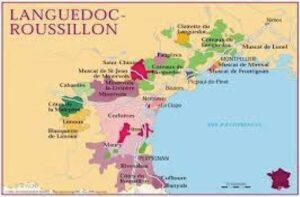
CONTACT OUR WINE DEPARTMENT


